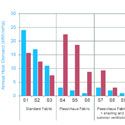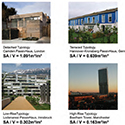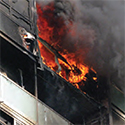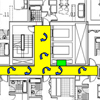Filter by
You must be a CTBUH Member to view this resource.
Beetham Tower
Hilton Tower
Building
Completed, 2006
M3
residential / hotel
concrete
168.9 m / 554 ft
50
2
219
You must be a CTBUH Member to view this resource.
You must be a CTBUH Member to view this resource.
Usually involved in the front end design, with a "typical" condition being that of a leadership role through either Schematic Design or Design Development, and then a monitoring role through the CD and CA phases.
The Design Engineer is usually involved in the front end design, typically taking the leadership role in the Schematic Design and Design Development, and then a monitoring role through the CD and CA phases.
You must be a CTBUH Member to view this resource.
Usually involved in the front end design, with a "typical" condition being that of a leadership role through either Schematic Design or Design Development, and then a monitoring role through the CD and CA phases.
The Design Engineer is usually involved in the front end design, typically taking the leadership role in the Schematic Design and Design Development, and then a monitoring role through the CD and CA phases.
The CTBUH lists a project manager when a specific firm has been commissioned to oversee this aspect of a tall building’s design/construction. When the project management efforts are handled by the developer, main contract, or architect, this field will be omitted.
The main contractor is the supervisory contractor of all construction work on a project, management of sub-contractors and vendors, etc. May be referred to as "Construction Manager," however, for consistency CTBUH uses the term "Main Contractor" exclusively.
Other Consultant refers to other organizations which provided significant consultation services for a building project (e.g. wind consultants, environmental consultants, fire and life safety consultants, etc).
Best Tall Building Worldwide 2007 Winner
2007 CTBUH Awards

12 June 2013 | Manchester
London and Beyond: Regionalism and the British Skyscraper
There are very few architects who have built tall buildings across numerous cities in the UK, and yet several cities outside London have enthusiastically embraced...

02 June 2017
A “Fabric-First” Approach to Sustainable Tall Building Design
Philip Oldfield, University of New South Wales
This research suggests the most effective way for improving energy efficiency in tall buildings is a “fabric-first” approach. This involves optimizing the performance of the...
The creation of an iconic landmark tower on this site was seen as an opportunity to create visual connectivity with the city centre, creating a destination and attracting activity to the south of the centre.
The scheme brings the 24hr activity of a busy hotel to the street with living spaces from studios for young professionals to family dwellings above. Visible from every route into the city, the tower is a statement of Manchester as an urban centre for living, working and relaxing.
The distinctive profile of the tower is created by two simple gestures: The apartment component is articulated by cantilevering the residential accommodation out beyond the hotel below at the sky bar, Level 23. This creates the dramatic stepped form. The glazed skin of the buffer zone to the south façade cantilevers 25m above the top floor level to form a crystalline “blade”.
Fundamental to the success of this scheme was the efficiency of the design. The careful coordination between Structural Engineering and MEP ensured efficiency of design and construction. Innovations such as advanced Fire Engineering delivered a highly efficient core solution whilst the use of passive ‘buffer zones’ and CHP delivered an energy efficient scheme.
Best Tall Building Worldwide 2007 Winner
2007 CTBUH Awards

12 June 2013 | Manchester
London and Beyond: Regionalism and the British Skyscraper
There are very few architects who have built tall buildings across numerous cities in the UK, and yet several cities outside London have enthusiastically embraced...

25 October 2007 | Manchester
The CTBUH 6th Annual Awards Dinner, set within the atmospheric setting of Mies van der Rohe’s iconic Crown Hall at the Illinois Institute of Technology,...

02 June 2017
A “Fabric-First” Approach to Sustainable Tall Building Design
This research suggests the most effective way for improving energy efficiency in tall buildings is a “fabric-first” approach. This involves optimizing the performance of the...

17 October 2016
A “Fabric-First” Approach to Sustainable Tall Building Design
This research suggests the most effective way for improving energy efficiency in tall buildings is a “fabric-first” approach. This involves optimizing the performance of the...

17 October 2016
Remodel, Recycle or Rebuild? - Addressing the Fire Safety Challenges of Repurposing Skyscrapers
Some of our established world cities are already facing the challenge of older tall building stock that is no longer relevant to the most commercially...

10 October 2004
Fire Engineering the Tallest Building in the Historic City of Manchester, UK
This paper addresses the fire engineered design of the means of escape provisions from the residential areas of the New Landmark Beetham Tower in the...
Subscribe below to receive periodic updates from CTBUH on the latest Tall Building and Urban news and CTBUH initiatives, including our monthly newsletter. Fields with a red asterisk (*) next to them are required.
View our privacy policy